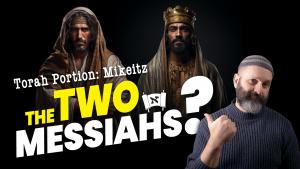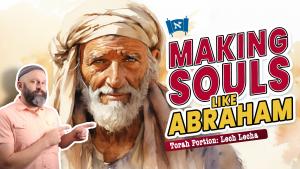Foundational Teachings of Messiah - Part 3
Therefore let us leave the elementary doctrine of Christ and go on to maturity, not laying again a foundation of repentance from dead works and of faith toward God , and of instruction about washings … (Hebrews 6:1-2)
The third component of the “elementary doctrine of Christ” as found in Hebrews 6:1–2 is “instruction about washings.” It seems this one, seemingly ambiguous phrase has given translators and commentators difficulty since nearly the time it was written. Our various English translations disagree and vary from “instruction about washings” (ESV), to “the doctrine of baptisms” (KJV), to “instruction about cleansing rites” (NIV). Commentators as well seem to have differing perspectives as to its meaning. Regarding this phrase, Franz Delitzsch comments, “the author of our epistle could hardly have chosen a more ambiguous and unsuitable expression than this, which is capable of such various interpretations.” 1
So what is so difficult about this particular instruction and why do translators and commentators have so much difficulty with it? The answer is this one little Greek word, βαπτισμῶν (baptismōn). Generally, the word is found in the singular, βαπτισμός (baptismos). But here, in this passage, we find the plural form which throws a wrench into traditional theology and interpretation. Since, according to Ephesians 4:5 there is only “one baptism,” reading this passage as instructions regarding “baptisms” would seem to indicate something other than Christian baptism. Commenting on this, the ESV Study Bible says,
“washings (plural of Gk. baptismos), where the plural may refer to teaching about the differences between Jewish purification rites and Christian baptism” 2
The Theological Dictionary of the New Testament is unclear as to its meaning as well, saying,
βαπτισμῶν διδαχή denotes instruction on the difference between Jewish (and pagan?) “washings” (including John’s baptism?) and Christian baptism (Hb. 6:2).3
Is this passage referring to Jewish ritual immersions, rather than baptism as we know it? After all, one of the only other passages in the New Testament in which the word “baptisms” appears is in Mark’s description of the ritual immersions of the Jews, which says,
For the Pharisees and all the Jews do not eat unless they wash their hands properly, holding to the tradition of the elders, and when they come from the marketplace, they do not eat unless they wash. And there are many other traditions that they observe, such as the washing of cups and pots and copper vessels and dining couches. (Mark 7:3–4)
What are these “washings” and what purpose do they serve? Furthermore, why would the concept of washings be an essential component to the life of a believer in the first century? In other words, why would ritual purity be of importance to first century believers in Yeshua? The book of Acts says of the believers,
“And day by day, attending the temple together and breaking bread in their homes, they received their food with glad and generous hearts, praising God and having favor with all the people. And the Lord added to their number day by day those who were being saved.” (Acts 2:46–47).
For people who would be attending the Temple on a regular basis, they would have to approach the Temple in a state of ritual purity. Although ritual impurity (being “unclean”) is not considered a sin, nor should it ever be confused with such, it did hinder one from entering into the Temple courts, effectively restricting the worshipper until he became purified (“clean”). One who approached the Temple, the physical manifestation of God on earth, in a state of ritual impurity was taking his life into his own hands. Therefore, in order to purge oneself from these ritual contaminations, a number of immersions developed from both biblical injunction and rabbinic interpretation. The one who was to be purified had to pass through a mikveh (ritual immersion pool) filled with “mayim hayim” (“living waters”). This was so critical that dozens of mikvaot (ritual immersion pools) were constructed near the entrance into the Temple complex so that the worshippers could immerse themselves just prior to entering the Temple.
Immersions took place for a number of reasons. The list includes things such as bodily emissions, designated skin conditions, menstruation, corpse contamination, secondary contaminations, eating meat from an animal which died of natural causes, beginning one’s priestly duties, etc. It also became a necessary component of the Jewish conversion ritual along with circumcision (for males) and an obligatory sacrifice. In fact, modern archaeology has found mikvaot to be fairly common in the homes of the wealthy Jews of the early centuries and use these discoveries to help designate Jewish residences from these time periods.
Part of the reason mikvaot were so important was the biblical injunction which required people to immerse themselves in order to deal with ritual impurity. The other is because of the natural connection between the physical and spiritual worlds. In the Talmud, Rabbi Pinchas ben Yair says,
Torah leads to watchfulness; watchfulness leads to zeal; zeal leads to cleanliness; cleanliness leads to separation; separation leads to purity; purity leads to chasidut; chasidut leads to humility; humility leads to fear of sin; fear of sin leads to holiness; holiness leads to the Holy Spirit, and the Holy Spirit leads to the Revival of the Dead.4
There was an almost over-emphasis on ritual purity in the Second Temple period. It was said that during the Second Temple period, “purity broke out among the Jews,”5 so much so that ritual purity was exalted above the value of human life.6
Are these the washing about which the author of Hebrews is addressing? If so, why would he need to address a Jewish audience as if they didn’t know something which is fundamentally Jewish in nature? How does this relate to basic faith in Messiah, the “elementary doctrine of Christ”? Although the Jewish believers would know these things and continue to practice them, most likely the “instruction about washing” in this passage has nothing to do with ritual purity. Most likely it is related to the immersion of proselytes, as mentioned earlier, but not in the context of conversion to Judaism, but becoming a member of the Yeshua-believing faith community.
In the Didache, one of the earliest Jewish-Christian documents circulated among the early believers, we find written instructions regarding the baptismal conversion rites for new believers.
Concerning baptism, baptize thus: having first recited all these precepts, baptize in the name of the Father and of the Son and of the Holy Spirit, in running water. But if you have no running water, baptize in other water, and if you cannot baptize in cold water, then warm water; but if you have neither, pour water on the head three times in the name of the Father and of the Son and of the Holy Spirit. Before a baptism, let him who baptizes and him who is baptized fast, and any others who may be able to do so. And command him who is baptized to fast one or two days beforehand.7
Here we find in this one document, instruction regarding immersions, or “instruction about washings.” In fact, this section on immersions begins by commissioning the overseer to teach the baptismal candidate the precepts of repentance and faith prior to accepting him as a prospect for the conversion ritual of immersion. The author says, “having first recited all these precepts, baptize…” It is only after these instructions that baptism can take place.
Does this fit as an “elementary doctrine of Christ,” that candidates for conversion should take seriously the act of accepting upon themselves the name of the Messiah through instruction in order to bear the yoke of his kingship? It seems to fit and finds its place at home with the previous two instructions, repentance and faith. It also bears witness to an authentic faith borne out of either a direct or indirect relationship with the early disciples of Yeshua, a thread which appears to be lacking in our conversion process in our day.
- 1. Franz Delitzsch, Commentary on the Epistle to the Hebrews - 2 Vol. Set (Klock & Klock Christian Publishers, 1978), 273,V1.
- 2. Crossway Bibles, The Esv Study Bible, 1ST ed. (Crossway, 2008-10-15), 2369.
- 3. Vol. 1: Theological dictionary of the New Testament. 1964- (G. Kittel, G. W. Bromiley & G. Friedrich, Ed.) (electronic ed.) (545). Grand Rapids, MI: Eerdmans.
- 4. b.Avodah Zarah 20b
- 5. t.Shabbat 1:14
- 6. See b.Yoma 23a
- 7. Didache 7:1–4








